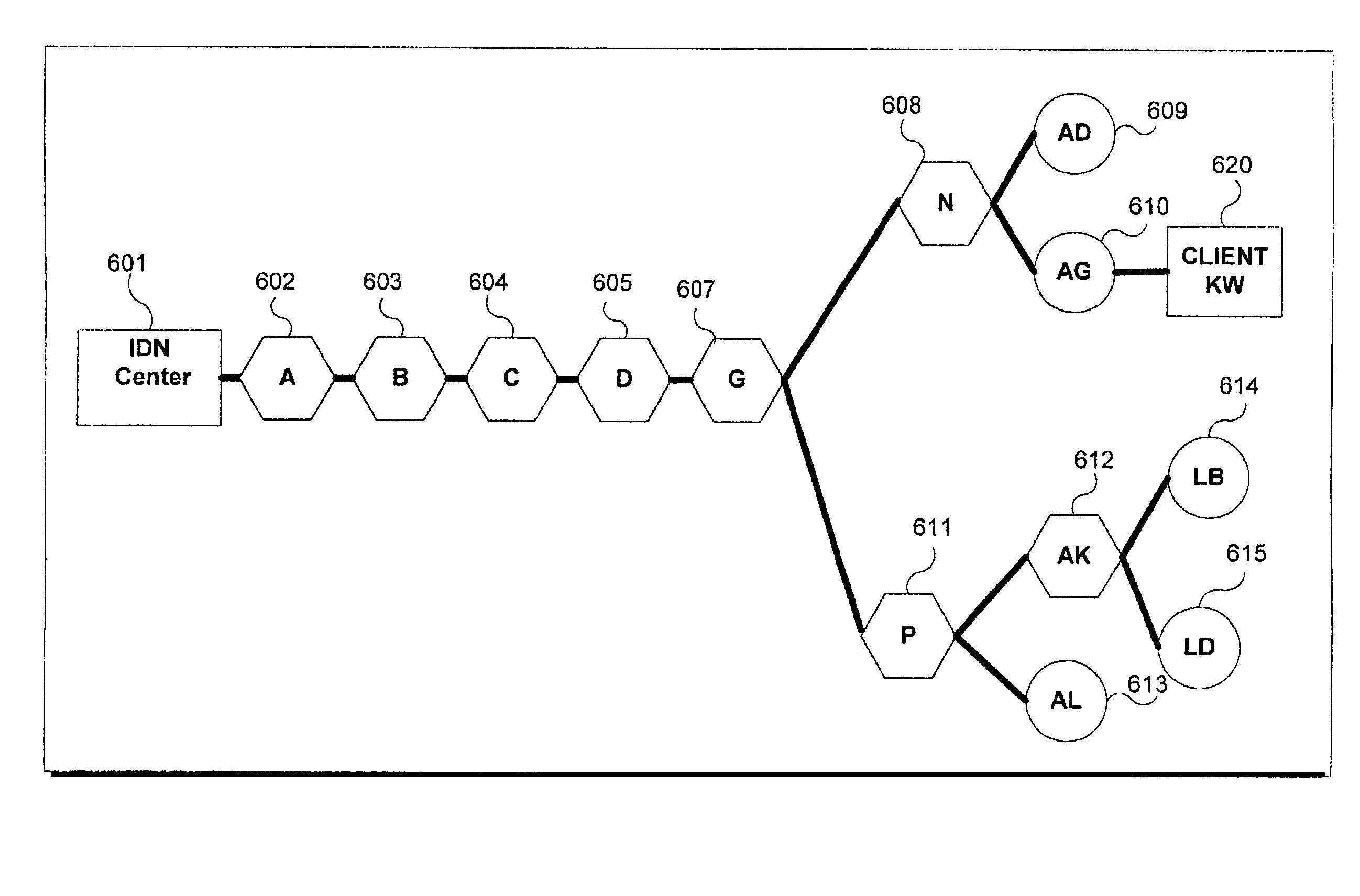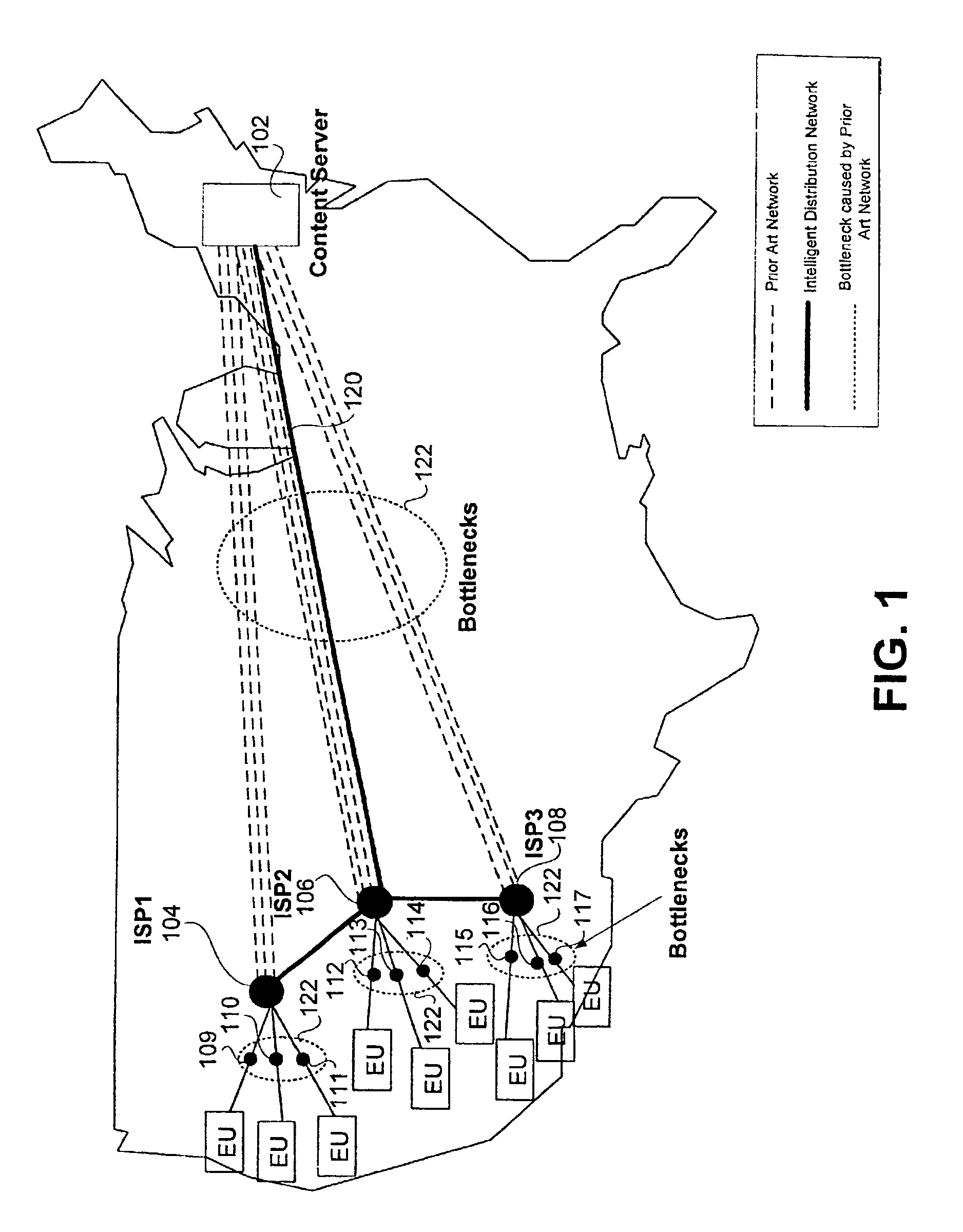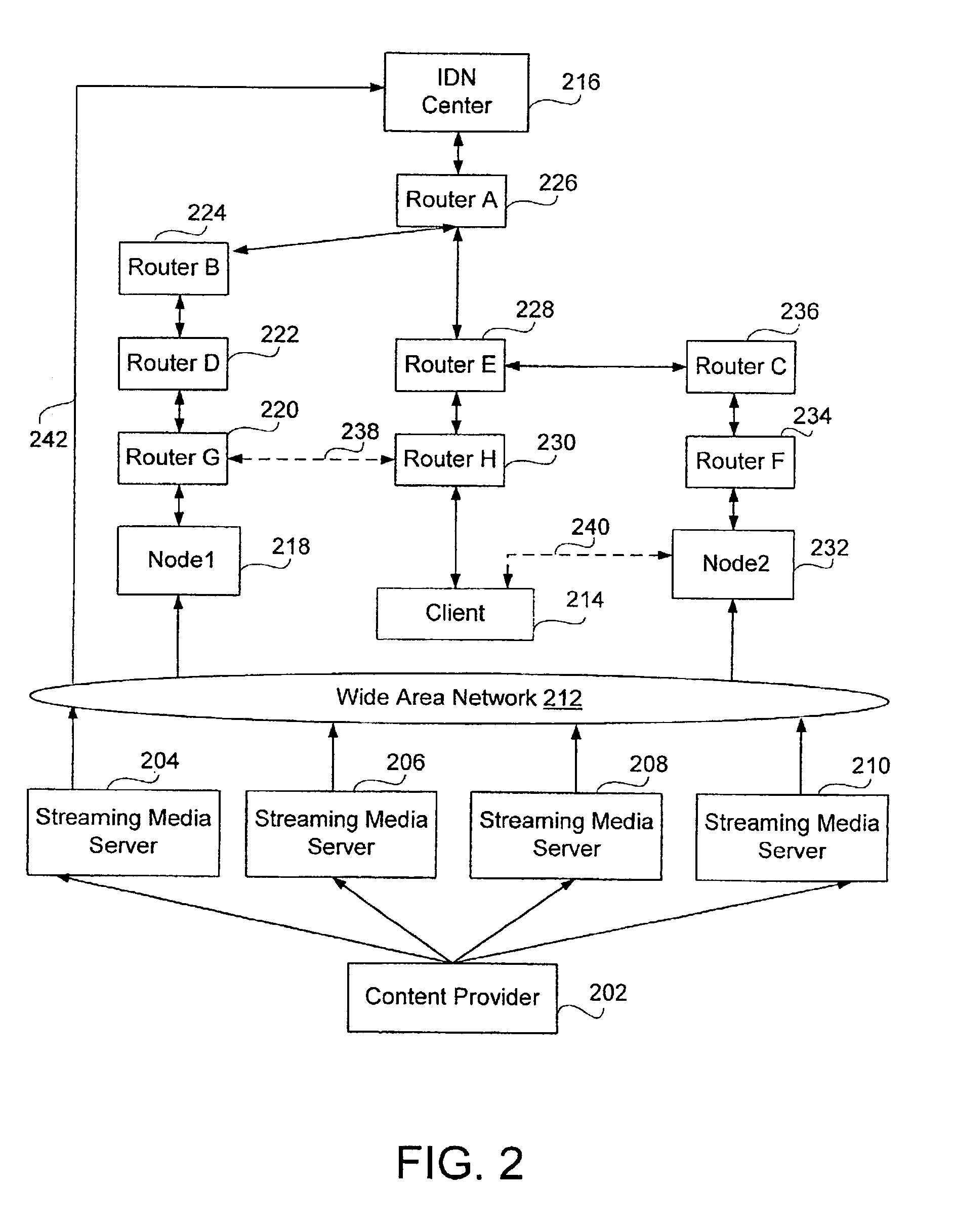System and method for distribution of data packets utilizing an intelligent distribution network
a technology of intelligent distribution network and data packet, applied in data switching network, frequency-division multiplex, instruments, etc., can solve the problem of retransmission of lost or delayed packets, increased latency, and increased overall loss of network throughput, so as to maximize streaming resources of aggregated idn nodes and increase the efficiency of the idn system
- Summary
- Abstract
- Description
- Claims
- Application Information
AI Technical Summary
Benefits of technology
Problems solved by technology
Method used
Image
Examples
Embodiment Construction
[0026]The present system and method comprises an intelligent distribution network (IDN) for the efficient distribution of content. The IDN system further includes at least one IDN management center and at least one node. The IDN system insures the efficient delivery of media content by limiting the number of content streams to a minimum and using the best performing nodes and links to stream the content. This system results in conservation of bandwidth and a reduction in latency, data packet loss, and unacceptable packet delay.
[0027]FIG. 1 illustrates a preferred content stream 120 over an IDN system as compared to a conventional method. According to the IDN system, only one content stream 120 is sent from the content server 102 across the WAN to a downstream node located in ISP2106. The downstream node in ISP2106 may be both a delivery node (the last node to receive the content before streaming to end users) and a transient node (node located between the content provider and the de...
PUM
 Login to View More
Login to View More Abstract
Description
Claims
Application Information
 Login to View More
Login to View More - R&D
- Intellectual Property
- Life Sciences
- Materials
- Tech Scout
- Unparalleled Data Quality
- Higher Quality Content
- 60% Fewer Hallucinations
Browse by: Latest US Patents, China's latest patents, Technical Efficacy Thesaurus, Application Domain, Technology Topic, Popular Technical Reports.
© 2025 PatSnap. All rights reserved.Legal|Privacy policy|Modern Slavery Act Transparency Statement|Sitemap|About US| Contact US: help@patsnap.com



